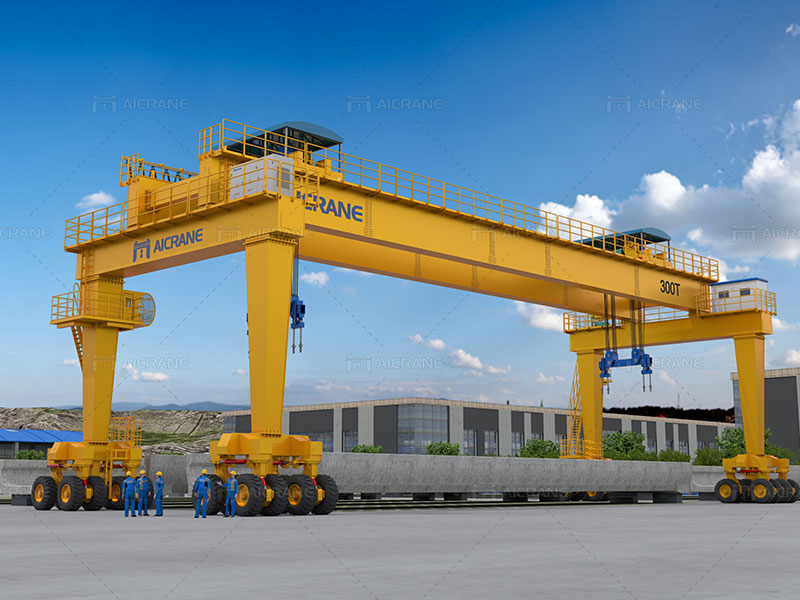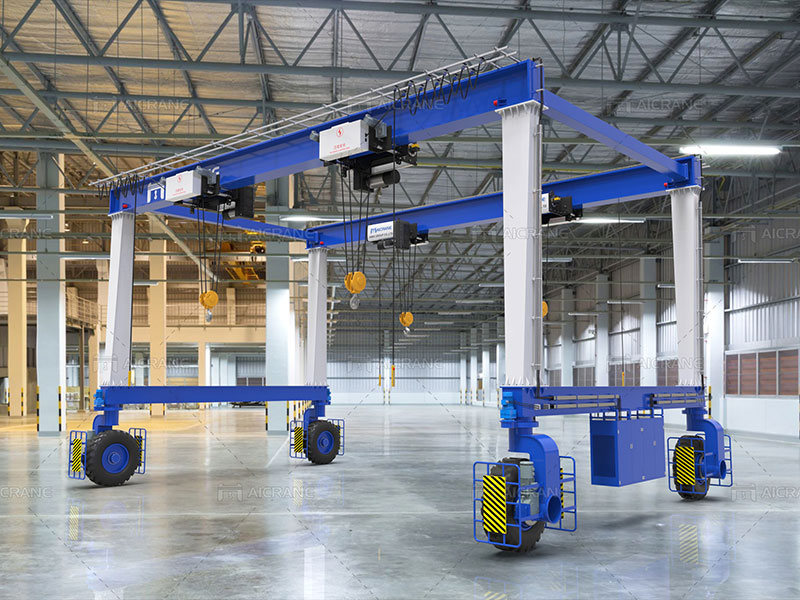In the construction industry, precision and efficiency are paramount. When it comes to lifting and transporting heavy concrete beams, the choice of equipment plays a pivotal role in ensuring a smooth and safe construction process. One such equipment that has gained significant popularity in recent years is the Rubber-Tired Gantry Crane (RTG crane). Originally designed for container handling in ports, RTG cranes have found a new purpose in the construction world, particularly in the lifting of concrete beams. In this article, we will explore the uses of RTG cranes in concrete beam lifting and how they contribute to enhancing construction efficiency.
The Rise of Rubber-Tired Gantry Cranes
Rubber-Tired Gantry Cranes, often referred to as RTGs, have been widely utilized in the shipping industry for decades. Their ability to efficiently move and stack shipping containers has made them indispensable in ports around the world. These rubber tired gantry cranes are equipped with rubber tires, allowing for easy mobility and versatility. Their success in the shipping industry has led to innovations and adaptations for other sectors, including construction.

Utilizing RTG Cranes in Concrete Beam Lifting
Concrete beams are essential components in various construction projects, ranging from bridges and tunnels to high-rise buildings. Lifting and positioning these massive beams can be a daunting task, but RTG cranes have proven to be up to the challenge. Here are some of the key uses of RTG cranes in concrete beam lifting:
Precise Positioning: RTG cranes are equipped with advanced control systems and precision technology, making it possible to accurately position concrete beams in tight spaces. This level of precision is crucial in construction, where even slight misalignment can lead to structural issues.
Mobility and Accessibility: Unlike traditional stationary cranes, RTG cranes can move freely within the construction site. This mobility allows them to access various areas without the need for extensive setup and dismantling. This is particularly advantageous when working on large construction sites with multiple lifting points.
Rapid Deployment: RTG cranes can be quickly deployed to different areas of a construction site, reducing downtime and increasing productivity. This flexibility is invaluable in meeting tight construction schedules.
Load Capacity: RTG cranes are designed to handle heavy loads, making them well-suited for lifting concrete beams of various sizes and weights. Their load-carrying capacity can be further enhanced through modifications and upgrades.
Safety Features: Safety is paramount in construction, and RTG cranes are equipped with safety features such as load monitoring systems, anti-sway technology, and collision avoidance systems. These features help prevent accidents and protect both workers and equipment.
Reduced Environmental Impact: RTG cranes are typically powered by electric motors, reducing emissions and noise pollution compared to diesel-powered cranes. This environmentally friendly aspect aligns with the growing emphasis on sustainable construction practices.
Cost Efficiency: The versatility and efficiency of rubber tyre gantry cranes can result in cost savings for construction projects. Their ability to perform multiple tasks and reduce downtime can help contractors stay within budget.
Case Studies: Real-World Applications
To better understand the practical applications of RTG cranes in concrete beam lifting, let’s explore a couple of case studies:
Bridge Construction: When building bridges, the installation of concrete beams is a critical phase. RTG cranes have been used to efficiently lift and position these beams, reducing construction time and minimizing disruption to traffic flow. Their mobility enables them to work from various angles, adapting to the unique challenges posed by bridge construction.
High-Rise Building Construction: In the construction of tall buildings, the use of RTG cranes has become increasingly common. These cranes can lift concrete beams to great heights, ensuring the structural integrity of the building. Their ability to navigate congested urban construction sites is a significant advantage in high-rise construction.

Challenges and Considerations
While RTG cranes offer numerous benefits in concrete beam lifting, it’s essential to acknowledge some of the challenges and considerations associated with their use:
Operational Training: Proper training is crucial for operators to maximize the potential of RTG cranes. The complexity of the equipment’s control systems and safety features requires skilled and experienced operators.
Site Preparation: RTG cranes rely on stable ground conditions. Ensuring that the construction site can support the weight of the crane and the loads it carries is essential.
Maintenance: Like any machinery, rubber tired straddle cranes require regular maintenance to ensure optimal performance. Downtime for maintenance should be factored into project planning.
Conclusion
Rubber-Tired Gantry Cranes have emerged as valuable assets in the construction industry, particularly for the lifting of concrete beams. Their precision, mobility, load capacity, safety features, and environmental friendliness make them well-suited for a wide range of construction projects. As the construction industry continues to evolve and prioritize efficiency and sustainability, RTG cranes are likely to play an even more significant role in shaping the future of construction, ensuring that buildings and infrastructure are built safely and efficiently.